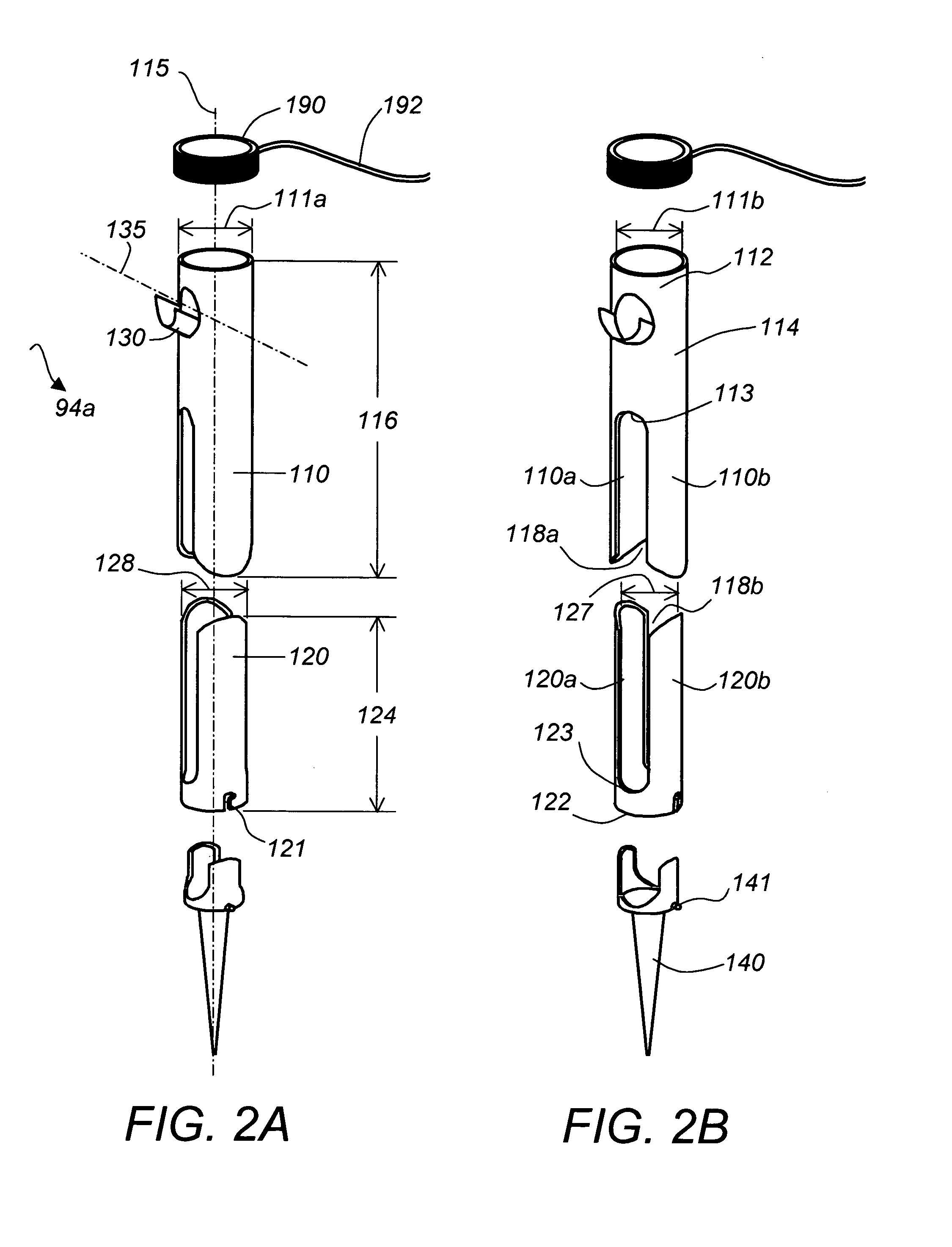Methods and devices for improving percutaneous access in minimally invasive surgeries
a technology for minimally invasive surgery and percutaneous access, applied in the direction of prosthesis, catheter, osteosynthesis device, etc., can solve the problems of prolonged recovery time, increased risk of infections, and increased technical difficulty of these operations, so as to reduce the risk of iatrogenic injuries to vital structures, improve visualization, and reduce the effect of technical difficulty
- Summary
- Abstract
- Description
- Claims
- Application Information
AI Technical Summary
Benefits of technology
Problems solved by technology
Method used
Image
Examples
Embodiment Construction
[0049] Referring to FIG. 1A, a patient 90 is positioned prone, lying flat on an operating table 91 in preparation for a minimally invasive surgery (MIS). Locations 92a-92f are marked on the patient's lower back corresponding to pedicle locations of adjacent vertebrae. For MIS procedures portals 94a-94f are inserted through skin incisions performed in the marked locations 92a-92f, respectively, shown in FIG. 1B.
[0050] According to one embodiment of this invention, shown in FIG. 2A, and FIG. 2B, portal 94a includes an outer elongated cannula 110 and an inner elongated cannula 120. Inner cannula 120 slides within outer cannula 110 and is secured at different locations of the inner wall of the outer cannula 110, thereby forming a first working channel 115 with adjustable length. This is especially desirable for reaching locations within the patient's body corresponding to the outer locations 92a-92f, that are at different distances from the patient's skin 70. Outer cannula 110 has mill...
PUM
 Login to View More
Login to View More Abstract
Description
Claims
Application Information
 Login to View More
Login to View More - R&D
- Intellectual Property
- Life Sciences
- Materials
- Tech Scout
- Unparalleled Data Quality
- Higher Quality Content
- 60% Fewer Hallucinations
Browse by: Latest US Patents, China's latest patents, Technical Efficacy Thesaurus, Application Domain, Technology Topic, Popular Technical Reports.
© 2025 PatSnap. All rights reserved.Legal|Privacy policy|Modern Slavery Act Transparency Statement|Sitemap|About US| Contact US: help@patsnap.com



